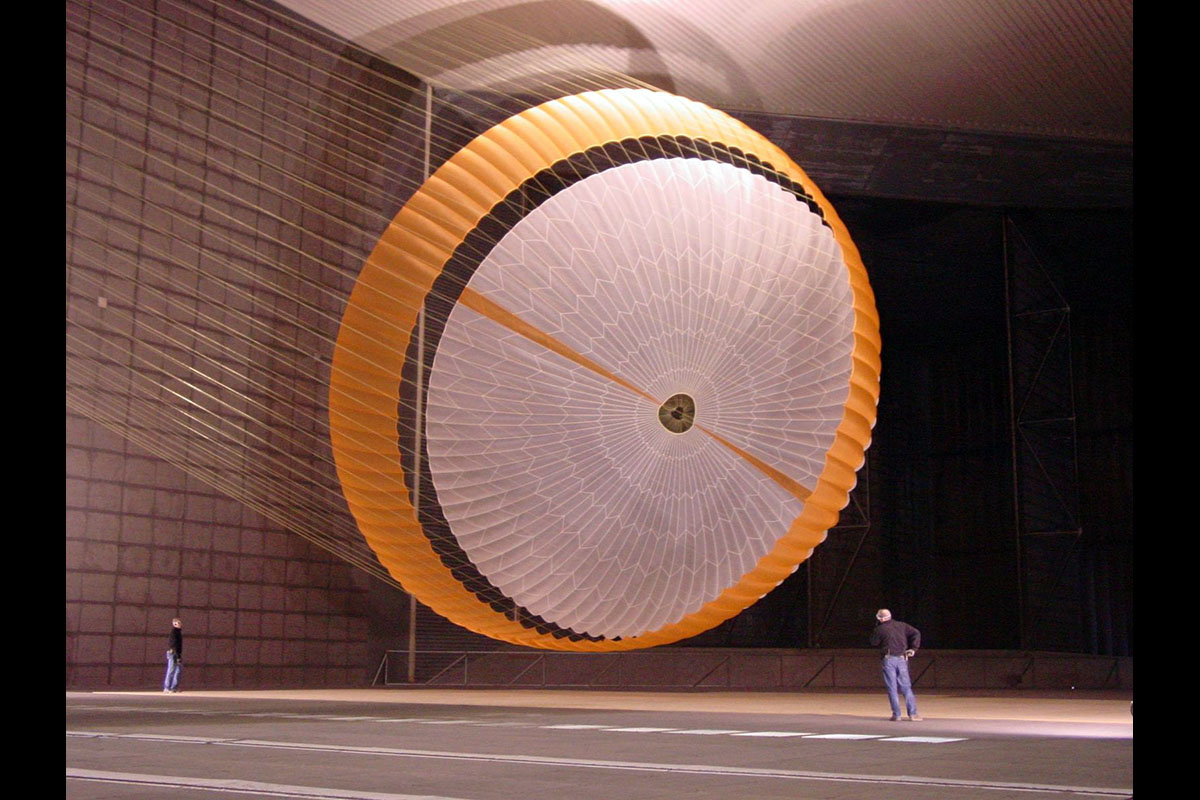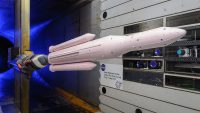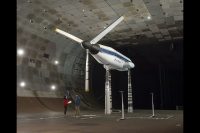An early parachute design for the Mars Science Laboratory landing system was tested in October 2007 inside the world’s largest wind tunnel at the National Full-Scale Aerodynamics Complex. In this image, two engineers are dwarfed by the parachute, which measures more than 165 feet in length and opens to a diameter of nearly 55 feet – with only about 12.5 feet of clearance to both the floor and ceiling. (NASA/JPL/Pioneer Aerospace)
Home An early parachute design for the Mars Science Laboratory landing system was tested in October 2007 inside the world’s largest wind tunnel at the National Full-Scale Aerodynamics Complex. In this image, two engineers are dwarfed by the parachute, which measures more than 165 feet in length and opens to a diameter of nearly 55 feet – with only about 12.5 feet of clearance to both the floor and ceiling. (NASA/JPL/Pioneer Aerospace) An early parachute design for the Mars Science Laboratory landing system was tested in October 2007 inside the world's largest wind tunnel at the National Full-Scale Aerodynamics Complex. In this image, two engineers are dwarfed by the parachute, which measures more than 165 feet in length and opens to a diameter of nearly 55 feet – with only about 12.5 feet of clearance to both the floor and ceiling. (NASA/JPL/Pioneer Aerospace)
An early parachute design for the Mars Science Laboratory landing system was tested in October 2007 inside the world’s largest wind tunnel at the National Full-Scale Aerodynamics Complex. In this image, two engineers are dwarfed by the parachute, which measures more than 165 feet in length and opens to a diameter of nearly 55 feet – with only about 12.5 feet of clearance to both the floor and ceiling. (NASA/JPL/Pioneer Aerospace)




